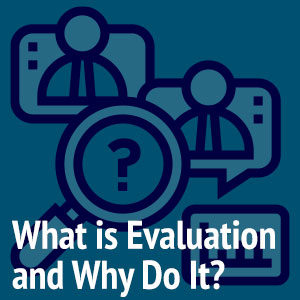 When you and your colleagues consider conducting an evaluation, it is critical that you be clear about who the evaluation is for. Your organization is likely to have a number of stakeholders who are interested in learning about whether the programmatic work is achieving its desired results (i.e. outcomes). Some programs are funded by a single funder, others may have multiple funders. Funders are, of course, a very important audience for evaluation findings. They will want to know whether their investment is producing results. However, you will want to consider additional stakeholders as well (see the list below). When you are considering an evaluation—whether it will be conducted by an internal or external evaluator—you will benefit from considering who will be the audience for evaluation findings?
When you and your colleagues consider conducting an evaluation, it is critical that you be clear about who the evaluation is for. Your organization is likely to have a number of stakeholders who are interested in learning about whether the programmatic work is achieving its desired results (i.e. outcomes). Some programs are funded by a single funder, others may have multiple funders. Funders are, of course, a very important audience for evaluation findings. They will want to know whether their investment is producing results. However, you will want to consider additional stakeholders as well (see the list below). When you are considering an evaluation—whether it will be conducted by an internal or external evaluator—you will benefit from considering who will be the audience for evaluation findings?- Who are the major stakeholders or interested parties for evaluation results?
- Who wants/needs to know?
- Who will benefit from knowing about the effectiveness of your program’s efforts?
- Make a list of key stakeholders and what they might want to know.
Remember, there can be, and usually are, a variety of potential stakeholders for evaluation findings—both external and internal.
- Current funders
- Potential funders
- Community stakeholders
- Advocacy organizations
- Government agencies
- Colleagues/Internal organizational constituencies
- Peer organizations
- Program managers and program staff
- The “field”/general public
- Political allies
- Voters
- Competitors
By being clear about the audiences for evaluation findings, you can better define the kind of evaluation you will want to do. To learn about our evaluation techniques visit our Data collection & Outcome measurement page.



